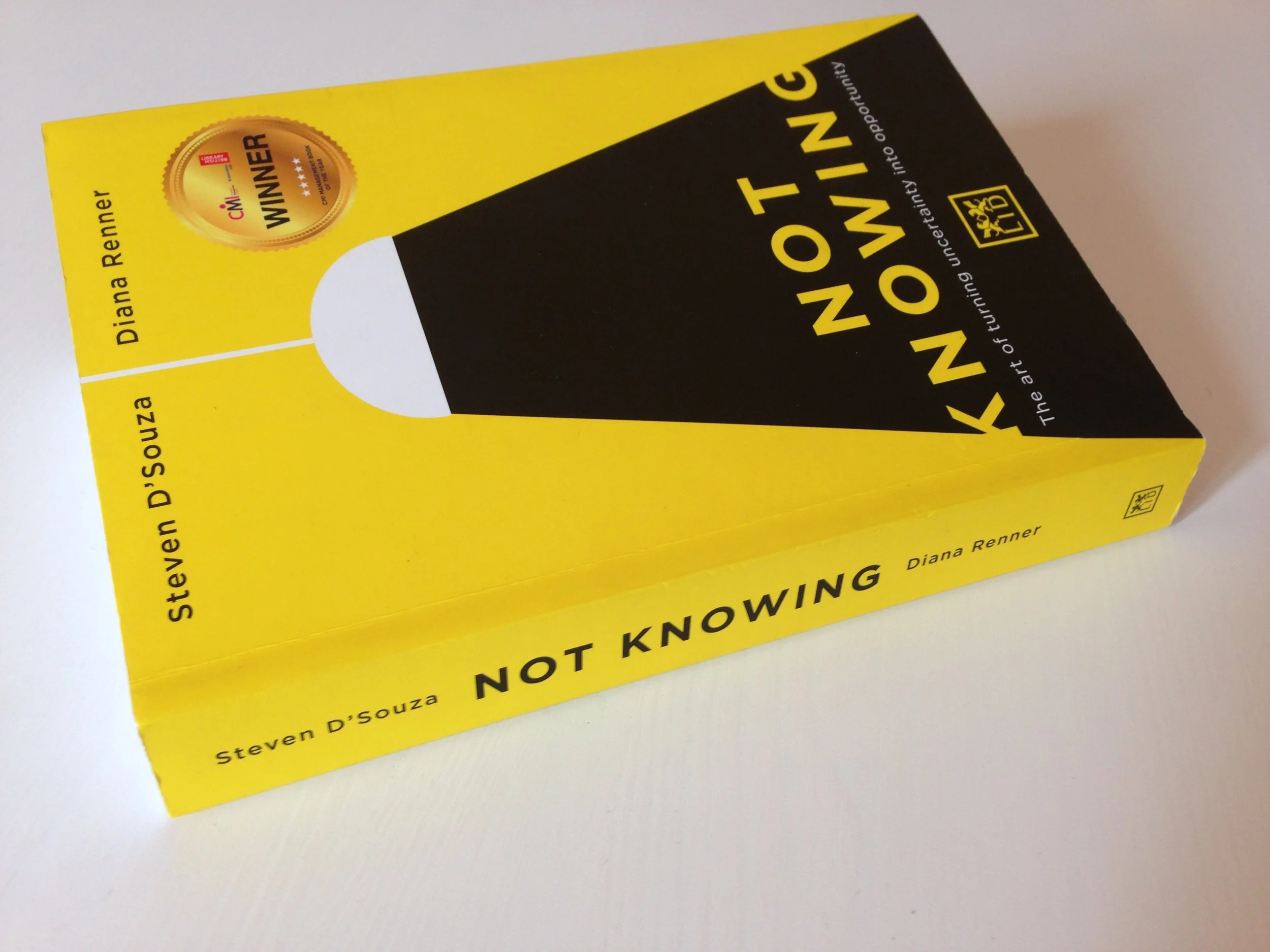This book is explicitly aimed at ‘the world of work’ and has positive recommendations from the movers and shakers of business, economics and leadership areas. Do no let that put you off! Although many of the case studies are taken from people working at often quite high-level positions in management, the main concepts in the book translate into all areas. Fundamentally this book hopes to prod people out of their safety zones, helping them to re-frame the concept of uncertainty and to embrace ‘Not Knowing’ as a positive force for opportunity. It’s not a ‘read it all in one sitting’ kind of book. In fact I would say that even a quick skim of it will offer you alternative positions to contemplate and it is littered with pithy sayings and inspiring quotes (presented as info graphics).
What I like about the book is that it is comprehensive and yet written in a conversational tone, so that it is easy to read. The short chapters centre on one salient point with titles like ‘the allure of the known’, ’embodied not knowing’ and ‘take meaningful risk’. It covers a lot of ground, starting from the generally accepted position that knowing is good and not knowing is bad. The authors would like us to let go of the fear of the unknown, to resist the urge to cling to what we think we know. They believe that “at the edge between the known and the unknown there is a fertile place, full of possibility. Playing at the edge can lead us to exprience fresh new learning, creativity, joy and wonder.” What this book does is to offer ways of thinking about the unknown, ways of stepping into it, ways of using it in our work. It’s not a ‘how to’ book, although there are questions and ‘experiments’ at the end that you can use to continue your investigations.
Personally I found the book useful as it illuminated up some deeply-held beliefs I have, which I didn’t necessarily realise I had. As someone who is passionate about learning new things and increasing my knowledge of the world, I have to admit that I do put a value on knowing, and on the views of experts. But knowledge is not a rigid thing, it grows and shrinks, there are aspects of the world that we know so little about, and maybe we will never know. These spaces of uncertainty are not bad, they are what allow creative and inventive people to say ‘what if…’
In my work and in my creative practice I often find myself shying away from taking risks, avoiding things that I do not know how they will turn out, being slightly wary of the unknown. This is a natural tendency we all have. We want to protect ourselves. But, this is not always helpful when you want to push yourself, when you want to create something new. Through conversations with other makers, whose practices embrace risk and failure, and through reading books like this, I am opening up to the possibility that inhabiting the unknown is not a scary place, it could be the best place to create.
“One doesn’t discover new lands without consenting to lose sight of the shore for a very long time.” – Andre Gide
Not Knowing. The art of turning uncertainty into opportunity by Steven D’Souza and Diana Renner(published by LID Publishing).
